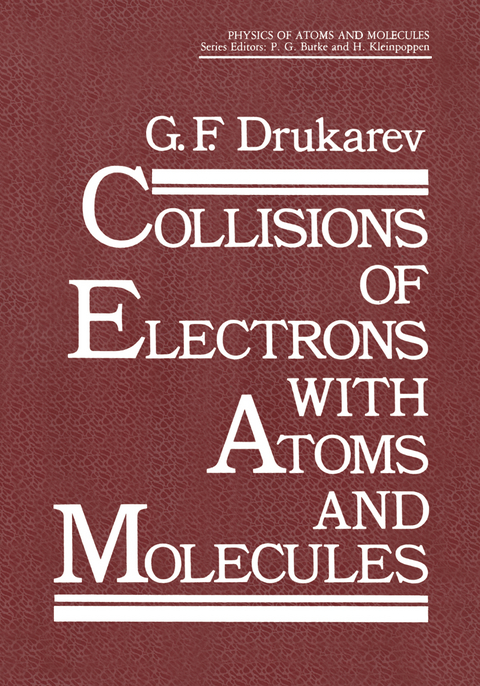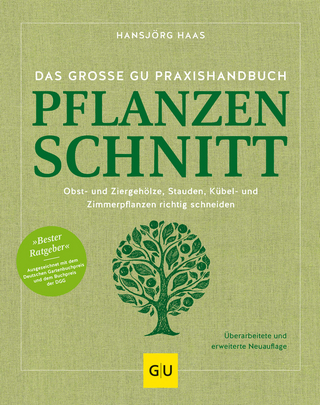
Collisions of Electrons with Atoms and Molecules
Springer-Verlag New York Inc.
978-1-4612-8997-5 (ISBN)
Introduction: General Description of Electron Collision Processes with Atomic Particles.- 0.1 The Concept of Cross Section.- 0.2 Interaction of Electrons with Atomsor Atomic Ions.- 0.3 Some Information about Atomic Structure.- 0.4 General Characteristics of the Cross SectionCalculation Methods.- 0.5 Collision Processes of Electrons with Moleculesand Molecular Ions.- Scattering of a Particle by a Potential.- 1.1 The Wave Function: Scattering Amplitude.- 1.2 Partial Waves Expansion.- 1.3 The Jost Function and its Properties.- 1.4 Scattering of a Slow Particle by a ShortRange Central Field: Resonances.- 1.5 Effect of a Long-range Tail in the Potentialwhich Falls as r-4.- 1.6 Effect of the Coulomb Attractive Potentialon Slow Particle Scattering.- 1.7 Scattering by Two Short-Range Nonoverlapping Potentials.- 1.8 Scattering by an Electric Dipole.- 1.9 Scattering of Fast Particles: Various Approximations.- Scattering of a Particle with Spin: Polarization Phenomena.- 2.1 Amplitude Matrix.- 2.2 The Density Matrix Formalism.- 2.3 Expressions for Observable Quantities.- 2.4 Polarization of a Beam of Particles.- 2.5 Scattering of a Partly-Polarized Beam.- The Simplest Two-Channel System.- 3.1 Formulation of the Problem: Boundary Conditions: S-matrix.- 3.2 Elastic Scattering Below the Threshold:Resonances.- 3.3 Cusps.- 3.4 Cross Sections Above the Threshold.- 3.5 Effect of an Attractive Coulomb Field.- Collisions of Electrons with Atoms and Ions: General Theory.- 4.1 Wave Function of the System: Amplitudes andCross Sections.- 4.2 The Total Spin Representation: Separation ofthe Spin Variables.- 4.3 Reduction of the Many-Channel Problem.- 4.4 Partial Waves: The Total Angular MomentumRepresentation.- 4.5 The Jost Matrix and Related Matrices.- 4.6 Effects of Closed Channels.- 4.7 Correlation and Polarization Phenomena.- Approximate Methods for Electron-Atom Collisions: Cross Section Calculations.- 5.1 Methods for the Approximate Solution of theMany-Channel Problem.- 5.2 The Born Approximation and its Modifications.- 5.3 The Glauber Approximation.- 5.4 Classical Mechanics (Binary Approximation).- Elastic and Inelastic Scattering of Electrons by Atoms and Positive Ions.- 6.1 Hydrogen.- 6.2 Helium.- 6.3 Alkali Metal Atoms (Li, Na, K, Cs).- 6.4 Other Atoms: References and Comments.- 6.5 Collisions of Electrons with Positive Ions.- Ionization.- 7.1 Threshold Behavior of the IonizationCross Section.- 7.2 The Differential Cross Sections: General Relations.- 7.3 Ionization Through Excitation of AutoionizingStates: Postcollision Interaction.- 7.4 Hydrogen.- 7.5 Helium.- 7.6 Total Ionization Cross Sections for Various Atoms.- Rotational and Vibrational Excitation of Molecules.- 8.1 Excitation of Rotation of Two Atom Molecules Below the Vibrational Threshold.- 8.2 Excitation of Vibrations and Combined Rotational-Vibrational Transitions.- Dissociation of Molecules.- 9.1 Dissociative Attachment.- 9.2 Dissociative Recombination.- 9.3 Dissociation Through Electronic Excitation.- References.
| Reihe/Serie | Physics of Atoms and Molecules |
|---|---|
| Zusatzinfo | 252 p. |
| Verlagsort | New York, NY |
| Sprache | englisch |
| Maße | 178 x 254 mm |
| Themenwelt | Sachbuch/Ratgeber ► Natur / Technik ► Garten |
| Naturwissenschaften ► Physik / Astronomie ► Atom- / Kern- / Molekularphysik | |
| Naturwissenschaften ► Physik / Astronomie ► Quantenphysik | |
| ISBN-10 | 1-4612-8997-1 / 1461289971 |
| ISBN-13 | 978-1-4612-8997-5 / 9781461289975 |
| Zustand | Neuware |
| Haben Sie eine Frage zum Produkt? |
aus dem Bereich


